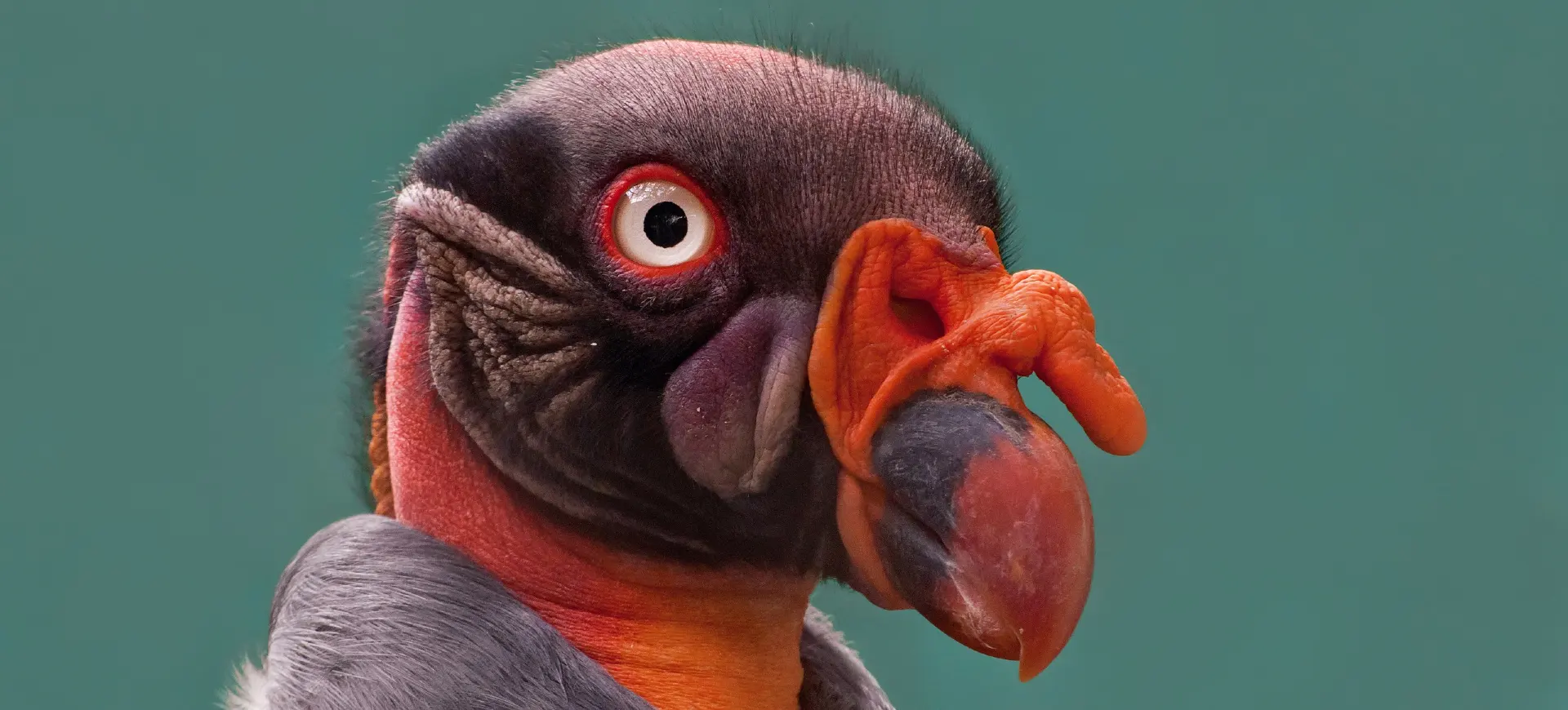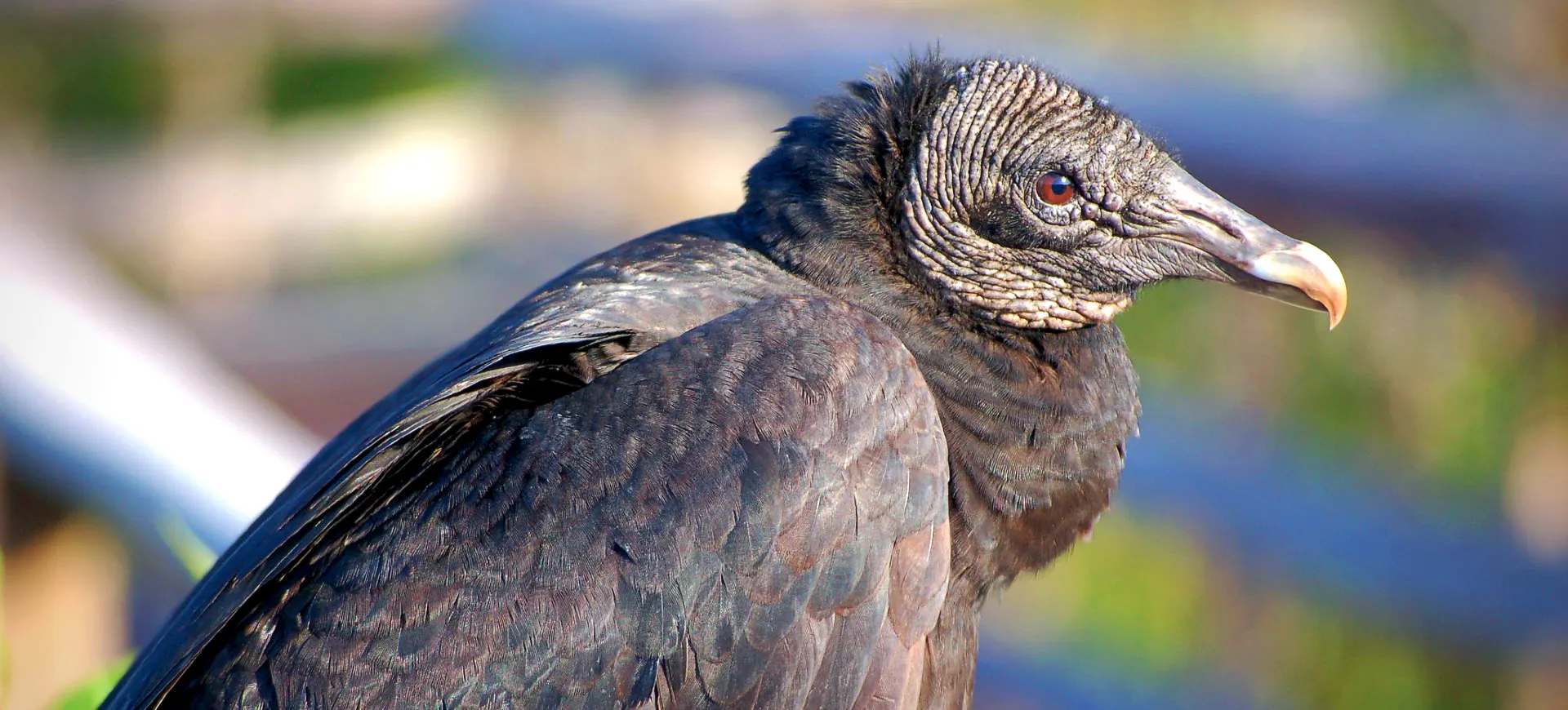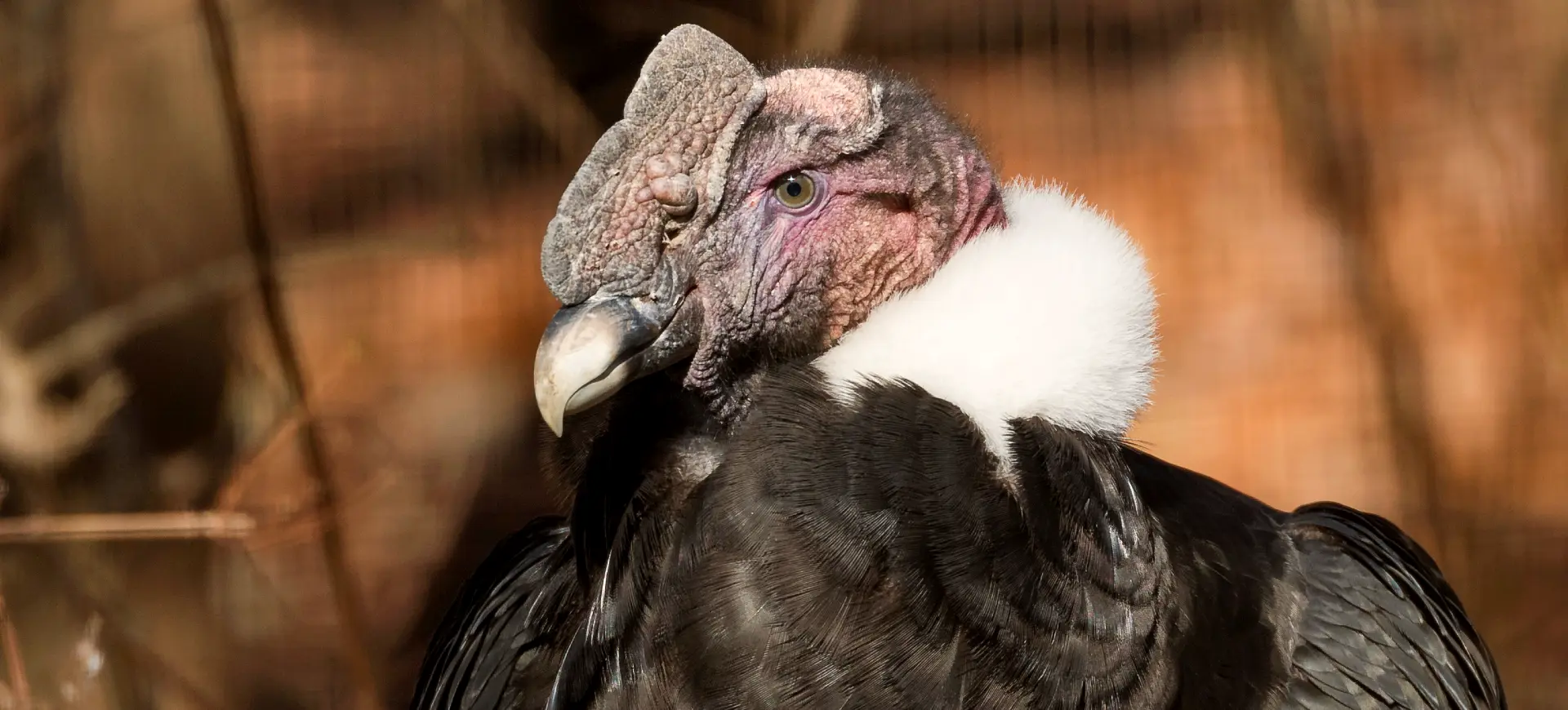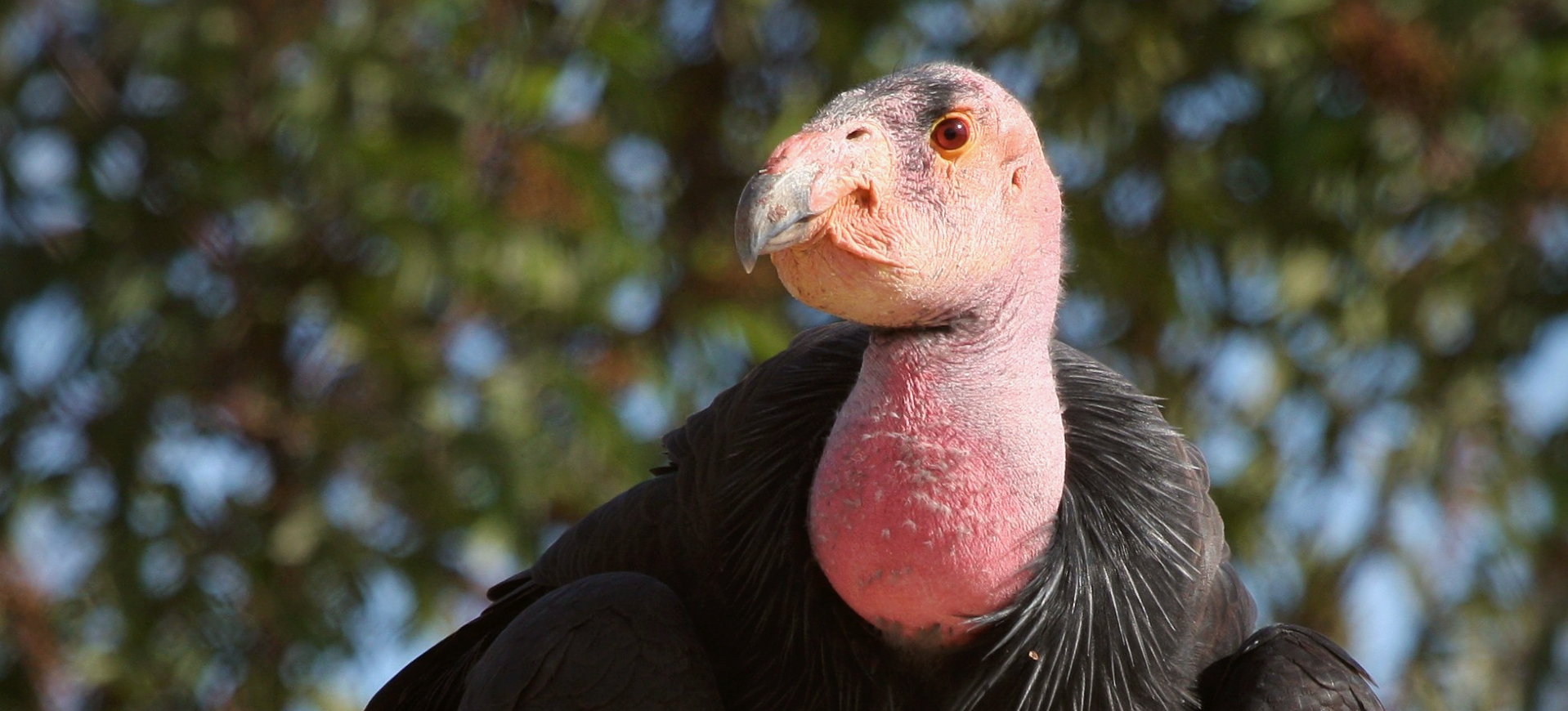Overview
The Turkey Vulture is a prominent bird of prey that inhabits a broad range covering North America, Central America, and South America. One of the bird’s most striking features is its bald red head, possibly lacking feathers as a hygiene adaptation for its scavenging lifestyle. The body is covered in dark plumage, starkly contrasting the silver-gray flight feathers visible when the bird is airborne. These color features make the Turkey Vulture easy to identify and serve functional purposes like thermoregulation and camouflage.
As a scavenger, the Turkey Vulture has a diet that consists primarily of carrion, making it an essential part of the ecosystem by helping to dispose of dead animals. Unlike many other birds of prey, it has an acute sense of smell, allowing it to locate decaying organic matter from great distances. This highly developed olfactory sense is rare among avian species and sets the Turkey Vulture apart from other raptors, which rely mostly on keen eyesight to find food. The bird’s beak is strong and sharp, designed to tear into the flesh of deceased animals, and its digestive system can neutralize many pathogens.
The Turkey Vulture is renowned for its soaring, energy-efficient, and graceful flight. The bird uses thermal updrafts to stay aloft, often for hours, without flapping its wings frequently. In flight, it holds its long wings in a characteristic V-shape, which increases stability and lift, allowing it to cover vast areas in search of food. This soaring behavior, with its distinctive appearance and critical ecological role, makes the Turkey Vulture a fascinating subject of study for ornithologists and nature enthusiasts alike.
Taxonomy
Kingdom
Phylum
Class
Order
Family
Genus
Species
Type
Physical Description:
The Turkey Vulture is a large bird with a featherless red head and neck. The plumage is predominantly dark brown to black, and the flight feathers on the wings are silver-gray. When perched, the Turkey Vulture appears hunched, and when in flight, it holds its wings in a characteristic “V” shape. The bird’s beak is relatively short but sharp, designed for tearing into carrion.
Adult Turkey Vultures have a wingspan ranging between 5.6 to 6.6 feet. This large wingspan allows them to soar with minimal effort, searching vast areas for food. The legs are relatively weak and not equipped to capture live prey, reinforcing their role as scavengers.

Lifespan: Wild: ~20 Years || Captivity: ~30 Years

Weight: Male: 3.3–6.3 lbs (1.5–2.85 kg) || Female: 3.6–6.6 lbs (1.6–3 kg)

Length: Male: 25–30 inches (64–76 cm) || Female: 27–32 inches (68–81 cm)

Height: Male: 26–32 inches (66–81 cm) || Female: 28–35 inches (71–89 cm)

Wingspan: 67–72 inches (170–183 cm)

Top Speed: 20-40 mph (32-64 km/h)
Characteristic:
Native Habitat:
Turkey Vultures are highly adaptable and can be found in various habitats, including forests, grasslands, deserts, and even suburban areas. They prefer open areas with abundant thermals, which facilitate their soaring flight. Rugged terrains like canyons and cliffs serve as their roosting sites.
These birds migrate seasonally. Northern populations travel south during the winter months, while populations in warmer regions tend to be resident year-round. Migration allows them to avoid extreme temperatures and to follow food availability, which can be scarce in certain seasons.
Climate Zones:
WWF Biomes:
Biogeographical Realms:
Continents:
Diet:
Diet & Feeding Habits:
Turkey Vultures are obligate scavengers, feeding exclusively on carrion, particularly small mammals and roadkill. They do not possess the tools to kill their prey. Their acute sense of smell enables them to detect decaying organic matter from great distances, even below the forest canopy. Turkey Vultures have a highly acidic digestive system that allows them to consume rotting meat without being affected by pathogens.
These birds often forage alone or in small groups but may congregate in large numbers around a sizable carcass. They prefer fresh carrion and frequently follow other vultures or predators to kill. Turkey Vultures have a hierarchy when feeding, with older and larger birds generally feeding first.
Mating Behavior:
Mating Description:
Turkey Vultures are monogamous and often form long-term pair bonds. During the breeding season, males perform various aerial displays to attract females, including circling and diving. Nests are usually rudimentary, often located on cliff ledges, inside hollow trees, or in other secluded spots.
Females typically lay 1 to 3 eggs, and both parents share incubation duties. The eggs hatch after about 38 to 41 days. The chicks are altricial, meaning they are born helpless and require considerable parental care. Both parents feed the young by regurgitating partially digested food into their mouths.
Reproduction Season:
Birth Type:
Pregnancy Duration:
Female Name:
Male Name:
Baby Name:
Social Structure Description:
Turkey Vultures are generally solitary birds but may form loose social groups, particularly around abundant food sources. These groups have a hierarchical structure based on age and size. Older and larger birds typically feed first at a carcass, while younger and smaller individuals wait their turn.
Unlike many other birds of prey, Turkish vultures are not territorial. They may roost in communal roosts, ranging from a few birds to several dozen. These roosts are often in secluded areas away from human activity, such as in tall trees or on cliffs.
Groups:
Conservation Status:
Population Trend:
Conservation organizations generally consider The Turkey Vulture of “Least Concern” due to its widespread range and stable population. It is estimated that around 4.5 to 5 million individuals are in the wild. The species is legally protected in many countries under various wildlife conservation acts.
Despite being common and widespread, the Turkey Vulture faces threats from habitat loss, especially in rapidly urbanizing areas. However, it has adapted well to human presence, and its scavenging nature allows it to thrive in many environments.
Population Threats:
The most significant threats to the Turkey Vulture population include habitat loss and degradation, especially in rapidly developing areas. Secondary poisoning from ingesting rodents that have consumed rodenticides is another concern. The species is also vulnerable to lead poisoning from spent lead ammunition.
Turkey Vultures are considered pests in some regions and may be targeted for culling, although such practices are generally illegal. Climate change may also impact the availability of food and suitable habitats, potentially affecting the species’ long-term survival.
Conservation Efforts:
Current conservation efforts primarily involve habitat preservation and public education. Various wildlife organizations aim to protect key roosting and feeding sites from development. Legislation exists to protect the species and is listed under the Migratory Bird Treaty Act in the United States.
Educational programs aim to increase public awareness about the ecological role of Turkey Vultures. These initiatives stress the importance of these birds in the ecosystem, particularly their role in cleaning up carcasses, thus reducing the spread of diseases.
Additional Resources:
Fun Facts
- Turkey Vultures have an excellent sense of smell, rare among birds of prey.
- They urinate on their legs to cool down, a behavior known as “urohidrosis.”
- Turkey Vultures do not build nests; they lay their eggs in natural cavities.
- Their digestive system can neutralize many pathogens, making them resistant to food-borne diseases.
- They are among the few birds that can “run” by climbing the ground.
- Turkey Vultures are silent birds; they do not have vocal cords.
- They are one of the few birds that use tools; they use sticks to turn over carcasses.
- The word “vulture” is derived from the Latin word “vulturus,” meaning “tearer.”
- Turkey Vultures can soar for hours without flapping their wings.
- They play a crucial role in the ecosystem by consuming carrion and reducing the spread of diseases.



















